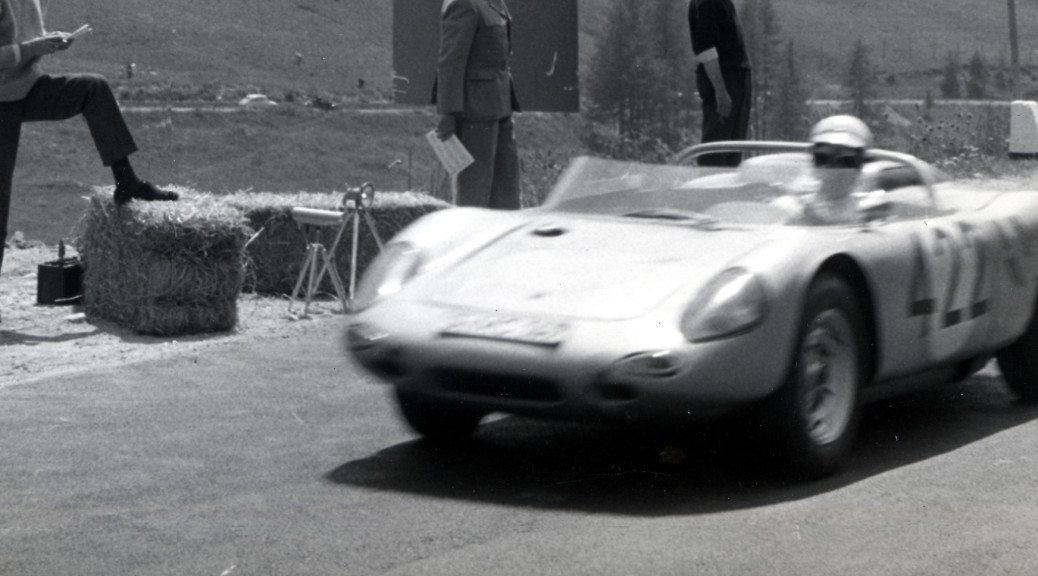LA MANIFESTAZIONE / THE EVENT
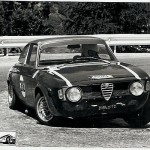 La Cesana – Sestriere una gara automobilistica in salita, nata nel 1961. Gli organizzatori, vollero trasformare in circuito la striscia di asfalto appena posata che portava dai 1.000 metri s.l.m. di Cesana Torinese al Colle del Sestriere, dove da poco per volere della famiglia Agnelli, era nata l’omonima localita’ sciistica e di villeggiatura estiva. La strada, che superava un dislivello di 1.000 metri in 10 km di percorso fra tornanti, curvoni alternati a brevi ma “invitanti” rettilinei, stuzzica la voglia di vedere cosa sarebbe successo a correrci sopra…
La Cesana – Sestriere una gara automobilistica in salita, nata nel 1961. Gli organizzatori, vollero trasformare in circuito la striscia di asfalto appena posata che portava dai 1.000 metri s.l.m. di Cesana Torinese al Colle del Sestriere, dove da poco per volere della famiglia Agnelli, era nata l’omonima localita’ sciistica e di villeggiatura estiva. La strada, che superava un dislivello di 1.000 metri in 10 km di percorso fra tornanti, curvoni alternati a brevi ma “invitanti” rettilinei, stuzzica la voglia di vedere cosa sarebbe successo a correrci sopra…
The Cesana – Sestriere is an uphill car race, born in 1961. The organizers wanted to transform into a circuit, the strip of asphalt just laid that led from 1,000 meters above sea level of Cesana Torinese to Colle del Sestriere, where recently at the behest of the Agnelli family, the homonymous ski and summer resort was born. The road, which overcomes a difference in altitude of 1,000 meters in 10 km of route between hairpin bends, curves alternating with short but “inviting” straights, stimulates the desire to see what would happen to race on it…
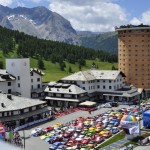 Arriviamo quindi ai giorni nostri, quando la “CE-SE”, come si chiama nell’ambiente delle corse, diventata una dei piu’ importanti appuntamenti dell’automobilismo sportivo e storico mondiale.
Arriviamo quindi ai giorni nostri, quando la “CE-SE”, come si chiama nell’ambiente delle corse, diventata una dei piu’ importanti appuntamenti dell’automobilismo sportivo e storico mondiale.
We thus come to the present day, when the “CE-SE”, as it is called in the racing world, has become one of the most important events in world motorsport and history.
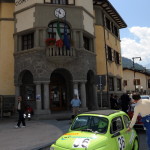 L’emozione delle vie di Cesana e di Piazza Giovanni Agnelli al Sestriere, trasformate in veri e propri paddock a cielo aperto, con modelli che ripercorrono la grande storia dei motori nel mondo, cosa rara da vivere e, ormai, nessun appassionato riesce piu’ a farne a meno.
L’emozione delle vie di Cesana e di Piazza Giovanni Agnelli al Sestriere, trasformate in veri e propri paddock a cielo aperto, con modelli che ripercorrono la grande storia dei motori nel mondo, cosa rara da vivere e, ormai, nessun appassionato riesce piu’ a farne a meno.
INFORMAZIONI GENERALI / GENERAL INFORMATION
La Cesana – Sestriere si svolge solitamente nell’arco di tre giorni in un weekend. Il venerdi’ dedicato alla verifiche tecniche e sportive, il sabato alle prove ufficiali e la domenica alla gara vera e propria. La Cronoscalata una gara internazionale di”Velocita’ in salita per auto storiche”, valida per il Campionato Europeo ed Italiano della Montagna.
The Cesana – Sestriere usually takes place over three days in a weekend. Friday is dedicated to technical and sports checks, Saturday to official test and Sunday to the actual race. The Cronoscalata is an international race of “Uphill Speed for historic cars”, valid for the European and Italian Hill Climb Championships.
LA STORIA DELLA CESANA SESTRIERE / THE HISTORY OF CESANA SESTRIERE
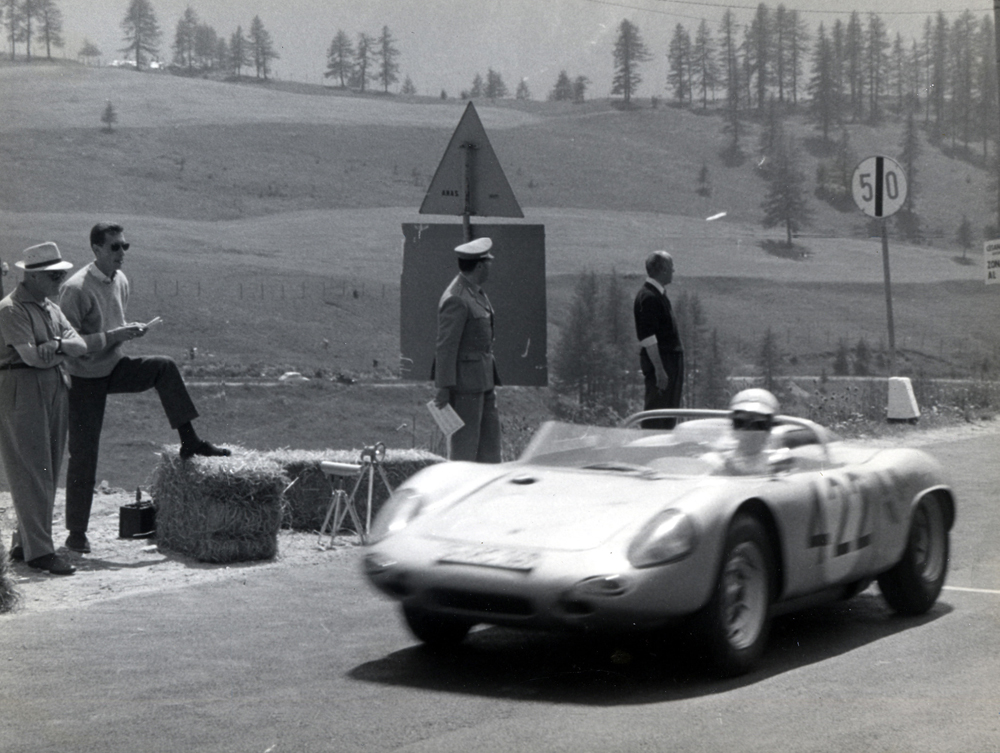 LA CORSA DEI CAMPIONI Il 1900 segna la nascita ufficiale delle grandi corse in salita italiane. La culla di questa specialità è il Piemonte, con “piste” naturali che si arrampicano sulle sue montagne; la mente ed il cuore che animano la nuova passione sono quelli dell’Automobile Club Torino. I 5 chilometri che dividono Madonna del Pilone da Pino Torinese sono quelli che il 21 aprile 1900 hanno misurato la bravura dei pionieri automobilistici. Poi sono arrivate la Sassi-Superga e la Susa-Moncenisio, le corse in salita che hanno richiamato la sfida tra le poche automobili circolanti nel 1902.
LA CORSA DEI CAMPIONI Il 1900 segna la nascita ufficiale delle grandi corse in salita italiane. La culla di questa specialità è il Piemonte, con “piste” naturali che si arrampicano sulle sue montagne; la mente ed il cuore che animano la nuova passione sono quelli dell’Automobile Club Torino. I 5 chilometri che dividono Madonna del Pilone da Pino Torinese sono quelli che il 21 aprile 1900 hanno misurato la bravura dei pionieri automobilistici. Poi sono arrivate la Sassi-Superga e la Susa-Moncenisio, le corse in salita che hanno richiamato la sfida tra le poche automobili circolanti nel 1902.
A queste si sono aggiunte in seguito la Garessio-San Bernardo, la Biella-Oropa e, appena al di là dei confini piemontesi, la Aosta-Gran San Bernardo.
THE RACE OF CHAMPIONS 1900 marks the official birth of the great Italian hill climb races. The cradle of this specialty is Piedmont, with natural “tracks” that climb its mountains; the mind and heart that animate the new passion are those of the Automobile Club Torino. The 5 kilometers that divide Madonna del Pilone from Pino Torinese are those that on April 21, 1900, measured the skill of the automotive pioneers. Then came the Sassi-Superga and the Susa-Moncenisio, the hill climb races that recalled the challenge between the few automobiles in circulation in 1902. To these were later added the Garessio-San Bernardo, the Biella-Oropa and, just beyond the Piedmont borders, the Aosta-Gran San Bernardo.
Il 6 agosto del 1961, anno delle celebrazioni per il centenario dell’Unità d’Italia, l’Automobile Club Torino, tenne a battesimo la “Cesana-Sestriere”. La lunga storia di questa gara si può considerare divisa in due epoche: quella del primo periodo tra il 1961 e il 1973 e quella del secondo tra il 1981 e il 1992. Nella pausa tra il ’74 ed il 1980, la Cesana-Sestriere è rimasta in silenzio, ma è stata inserita come prova cronometrata nel percorso del Giro d’Italia Automobilistico.
On August 6, 1961, the year of the celebrations for the centenary of the Unification of Italy, the Automobile Club of Turin, inaugurated the “Cesana-Sestriere”. The long history of this race can be considered divided into two eras: the first period between 1961 and 1973 and the second period between 1981 and 1992. In the break between 1974 and 1980, the Cesana-Sestriere remained silent, but was included as a time trial in the route of the Giro d’Italia Automobilistico.
Nei primi quattordici anni della Cesana-Sestriere (che appena nata poteva già contare sulla validità per il titolo italiano assoluto e per il Trofeo Europeo, in seguito Campionato Europeo FIA della Montagna) si sono alternati sul gradino alto del podio grandi nomi come Edgar Barth, Lodovico Scarfiotti, Arturo Merzario, Rolf Stommelen, e grandi case automobilistiche quali Maserati, Porsche, Ferrari, Abarth. Alla ripresa degli anni Ottanta, la competizione si era trasformata in gara tecnica con le vetture sport di Enzo Osella tra le vere protagoniste.
In the first fourteen years of the Cesana-Sestriere (which, when born, could already count on the validity for the Italian overall title and for the European Trophy, later FIA European Mountain Championship) the top step of the podium was occupied by great names such as Edgar Barth, Lodovico Scarfiotti, Arturo Merzario, Rolf Stommelen, and major car manufacturers such as Maserati, Porsche, Ferrari, Abarth. When it resumed in the 1980s, the competition had transformed into a technical race with Enzo Osella’s sports cars among the real protagonists.
Ma la passione del pubblico e l’alta partecipazione dei piloti non è mai cambiata, né si è attenuata, anzi, la volontà di mettere alla prova la propria automobile ed i propri nervi per stampare sempre nuovi record, ogni anno da migliorare. Questo ha permesso a grandi campioni di percorrere i 10 km e 400 metri del tracciato sempre in un tempo minore fino a raggiungere l’incredibile record di 4’30”06 fatto segnare da Stefano Di Fulvio nell’edizione 2016.
But the passion of the public and the high participation of the drivers has never changed, nor has it diminished, indeed, the desire to test one’s car and one’s nerves to always print new records, to be improved every year. This has allowed great champions to cover the 10 km and 400 meters of the track in a shorter time until reaching the incredible record of 4’30″06 set by Stefano Di Fulvio in the 2016 edition.
Di sicuro, la “Cesana-Sestriere” si è meritata il posto di grande prestigio tra le cronoscalate: sulla sua tortuosa lingua d’asfalto si sono affrontati a viso aperto una moltitudine di piloti, che a centinaia hanno composto la lista degli iscritti di ogni edizione.
The “Cesana-Sestriere” has certainly earned its place of great prestige among hill climbs: on its winding strip of asphalt, a multitude of riders have faced each other head-on, hundreds of whom have made up the list of entrants for each edition.
Il dominatore per numero di vittorie conquistate è indubbiamente il toscano Mauro Nesti che è riuscito a tagliare il traguardo nel minor tempo per ben nove volte (nel 1972, 1973, 1981, 1982, 1983, 1984, 1986, 1988 e 1989) seguito da Di Fulvio con quattro (2013, 2014, 2015, 2016). A tre vittorie si piazza Bonucci (2007, 2011, 2012) mentre con due vittorie a testa troviamo Barth (1963, 1964 su Porsche 908, Scarfiotti (1965, 1966 su Ferrari Dino) e Vilarino (1990, 1992 su Lola).
The dominator in terms of number of victories achieved is undoubtedly the tuscan Mauro Nesti who managed to cross the finish line in the shortest time nine times (in 1972, 1973, 1981, 1982, 1983, 1984, 1986, 1988 and 1989) followed by Di Fulvio with four (2013, 2014, 2015, 2016). Bonucci has three victories (2007, 2011, 2012) while with two victories each we find Barth (1963, 1964 on a Porsche 908, Scarfiotti (1965, 1966 on a Ferrari Dino) and Vilarino (1990, 1992 on a Lola).

